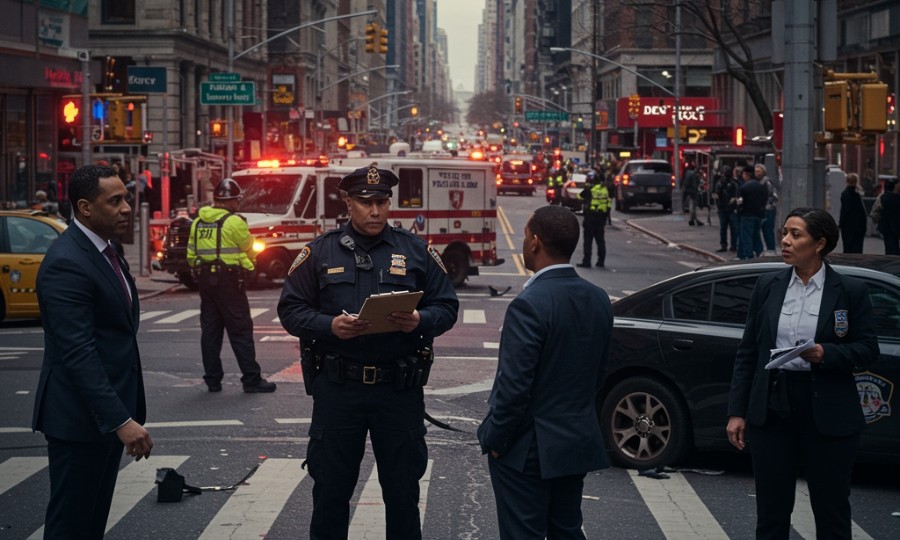
Life in New York City moves quickly, and unfortunately, car accidents are a harsh reality for many. When you or a loved one suffers an injury, the legal landscape can seem overwhelming. Furthermore, navigating the aftermath becomes even more complex when the laws governing our roads are changing. At RMFW Law, we understand these challenges deeply.
Recently, New York’s Vehicle and Traffic Law (VTL) has seen some significant updates. These changes directly impact how accidents are handled, how liability is determined, and ultimately, how your potential car accident claim might proceed. Therefore, it is incredibly important for every New Yorker to understand these revisions. Our goal today is to explain these crucial updates in plain English, helping you feel more confident and informed about your rights and next steps.
Understanding Recent VTL Revisions
New York State continually reviews and updates its traffic laws to enhance safety and accountability on our roads. These revisions often reflect evolving traffic patterns and a commitment to reducing preventable accidents. Consequently, staying informed about these changes is vital for all drivers and pedestrians alike.
Changes to the Point System for Violations
One notable area of revision involves the point system for traffic violations. The Department of Motor Vehicles (DMV) assigns points for various infractions, such as speeding or reckless driving. Accumulating too many points can lead to serious consequences, including fines, increased insurance premiums, and even license suspension or revocation.
Specifically, recent updates might adjust the number of points assigned to certain violations or introduce new point categories. For instance, a minor speeding ticket might now carry a slightly higher point value. Clearly, these changes aim to deter dangerous driving habits more effectively. Ultimately, this stricter approach intends to make our streets safer for everyone.
Increased Penalties for High-Risk Behaviors
Beyond the point system, New York has also sharpened its focus on high-risk driving behaviors. Lawmakers have increased penalties for offenses that pose a significant threat to public safety. Notably, these include leaving the scene of an accident and alcohol or drug-related driving offenses.
Leaving the scene of an accident, particularly one involving injury or death, is a grave offense. The updated laws impose more severe fines and longer potential jail sentences for drivers who flee. Similarly, penalties for Driving While Intoxicated (DWI) and Driving While Ability Impaired (DWAI) have become more stringent. These increased penalties reflect the state’s firm resolve to combat impaired driving and ensure accountability. In essence, these changes mean that negligent drivers face harsher consequences, which can directly influence the strength of your accident claim.
The Direct Impact on Accident Claims
When new traffic laws take effect, they don’t just change how police issue tickets; they also influence the landscape of personal injury claims. Consequently, understanding these links is paramount for anyone involved in an accident. The revised VTL, with its stricter penalties and updated point system, can certainly play a significant role in establishing liability and fault.
For example, if the at-fault driver in your accident was cited for a violation that now carries increased points or penalties, this strengthens the argument that they acted negligently. Therefore, documentation of such violations becomes a crucial piece of evidence in your claim. Ultimately, the more clearly you can demonstrate the other driver’s fault, the stronger your position for seeking compensation.
Understanding New York’s Unique Legal Framework
While the VTL updates are recent, they interact with long-standing pillars of New York personal injury law. It is crucial to understand how these foundational concepts—No-Fault insurance, the “serious injury” threshold, and pure comparative negligence—continue to shape car accident claims, especially in light of the new VTL enforcement.
New York’s No-Fault Insurance System
New York operates under a “no-fault” insurance system. This means that if you are injured in a car accident, your own insurance company generally pays for your medical expenses and lost wages, regardless of who was at fault for the collision. This system aims to streamline the process for minor injuries and reduce litigation. However, it does not prevent you from pursuing a claim against the at-fault driver for more significant damages.
Specifically, No-Fault benefits, also known as Personal Injury Protection (PIP), cover essential expenses up to a certain limit. These benefits include medical treatment, prescription costs, lost earnings (up to 80% of your gross income, with a maximum weekly amount), and other reasonable and necessary expenses. Importantly, you must file a No-Fault application with your insurance company within 30 days of the accident. Missing this deadline can jeopardize your ability to receive these vital benefits. Therefore, acting quickly after an accident is always advisable.
The “Serious Injury” Threshold
Despite the No-Fault system, you can still sue the at-fault driver for pain and suffering and other non-economic damages. However, to do so, you must meet New York’s “serious injury” threshold. This is a critical hurdle in many personal injury cases.
New York Insurance Law defines “serious injury” very specifically. It includes categories such as permanent loss of use of a body organ, member, function or system; permanent consequential limitation of use of a body organ or member; significant limitation of use of a body function or system; or a medically determined injury or impairment of a non-permanent nature which prevents the injured person from performing substantially all of the material acts which constitute such person’s usual and customary daily activities for not less than 90 days during the 180 days immediately following the occurrence of the injury or impairment. Furthermore, certain severe injuries like fractures or significant disfigurement automatically qualify. Consequently, proving you meet this threshold often requires extensive medical documentation and expert testimony. This is precisely where experienced legal counsel becomes invaluable.
The Pure Comparative Negligence Rule
Another fundamental aspect of New York personal injury law is the pure comparative negligence rule. This rule applies when both drivers share some degree of fault for an accident. Unlike some states where even a small percentage of fault can bar your recovery, New York allows you to recover damages even if you are partially at fault.
Here’s how it works: if you are found to be 20% at fault for an accident and the other driver is 80% at fault, your total damages would be reduced by your percentage of fault. For example, if your total damages are $100,000, you would still be able to recover $80,000. This rule is incredibly important because it ensures that even if you bear some responsibility, you are not entirely precluded from receiving compensation for your injuries. Consequently, determining the precise percentage of fault is often a heavily contested issue in car accident claims, underscoring the need for skilled legal representation.
Your Confident Next Steps After an Accident
Given the complexities of New York’s traffic laws and insurance regulations, knowing what steps to take after an accident is crucial. Your actions immediately following a collision can significantly impact your health, your legal rights, and the strength of any future claim. Therefore, we always recommend a clear, calm approach.
- Ensure Safety and Seek Medical Attention: First and foremost, check for injuries. If anyone is hurt, call 911 immediately. Even if you feel fine, it is essential to get checked by a medical professional. Some injuries, like whiplash or concussions, might not manifest symptoms until hours or days later. Furthermore, timely medical evaluation creates a crucial record of your injuries.
- Contact the Police: Report the accident, especially if there are injuries or significant property damage. A police report provides an official, impartial account of the incident, which can be invaluable for your insurance claim and potential lawsuit.
- Gather Information: If it’s safe to do so, collect contact and insurance information from all drivers involved. Take photos or videos of the accident scene, vehicle damage, road conditions, and any visible injuries. Moreover, note the names and contact details of any witnesses.
- Do Not Admit Fault: Even if you think you might be partially responsible, do not admit fault at the scene. Statements made at the accident site can be used against you later. Simply state the facts as you know them.
- Report to Your Insurance Company: Notify your own insurance company about the accident promptly. Remember the 30-day deadline for No-Fault applications.
- Consult with an Experienced Personal Injury Lawyer: This step is perhaps the most important. Navigating the nuances of New York’s VTL updates, the No-Fault system, the serious injury threshold, and comparative negligence is incredibly challenging on your own. A skilled personal injury lawyer can evaluate your case, explain your rights, gather necessary evidence, handle communications with insurance companies, and fight for the compensation you deserve. Ultimately, having an advocate by your side makes a significant difference.
The landscape of New York’s Vehicle and Traffic Laws is dynamic, with recent updates aiming to enhance safety and accountability. While these changes are designed to protect us, they also add layers of complexity to car accident claims. Consequently, understanding your rights and the implications of these laws is more important than ever.
At RMFW Law, we stand as your trusted guides through these challenging times. We compassionately serve injured New Yorkers, helping them navigate the legal process with clarity and confidence. If you or a loved one has been injured in a car accident, do not hesitate to reach out. We offer a free, no-obligation consultation to discuss your specific situation and explain how the latest legal updates might affect your case. Therefore, take that confident next step towards securing your future. We are here to help you heal and recover.
Free Case Consultation
Injured in an accident? Contact Rosenberg, Minc, Falkoff & Wolff for a free and confidential case review with an experienced NYC personal injury attorney.
This article was drafted with AI assistance. Please verify all claims and information for accuracy. The content is for informational purposes only and does not constitute professional advice.


